Looking Back At 75 Years Of Formula 1 Racing
The thrilling sport of Formula 1 racing first emerged, in its modern form, with the 1950 Formula 1 World Championship, held at the British Grand Prix at Silverstone.
F1 quickly came into its own, becoming synonymous with cutting-edge motorsports technology, exotic locales, and glamorous drivers. Over the years, it’s transitioned from a largely European affair to a truly global phenomenon — and 2025 marks the 75th anniversary (and the 76th running) of this iconic sport’s championship.
The sport looked very different in 1950.
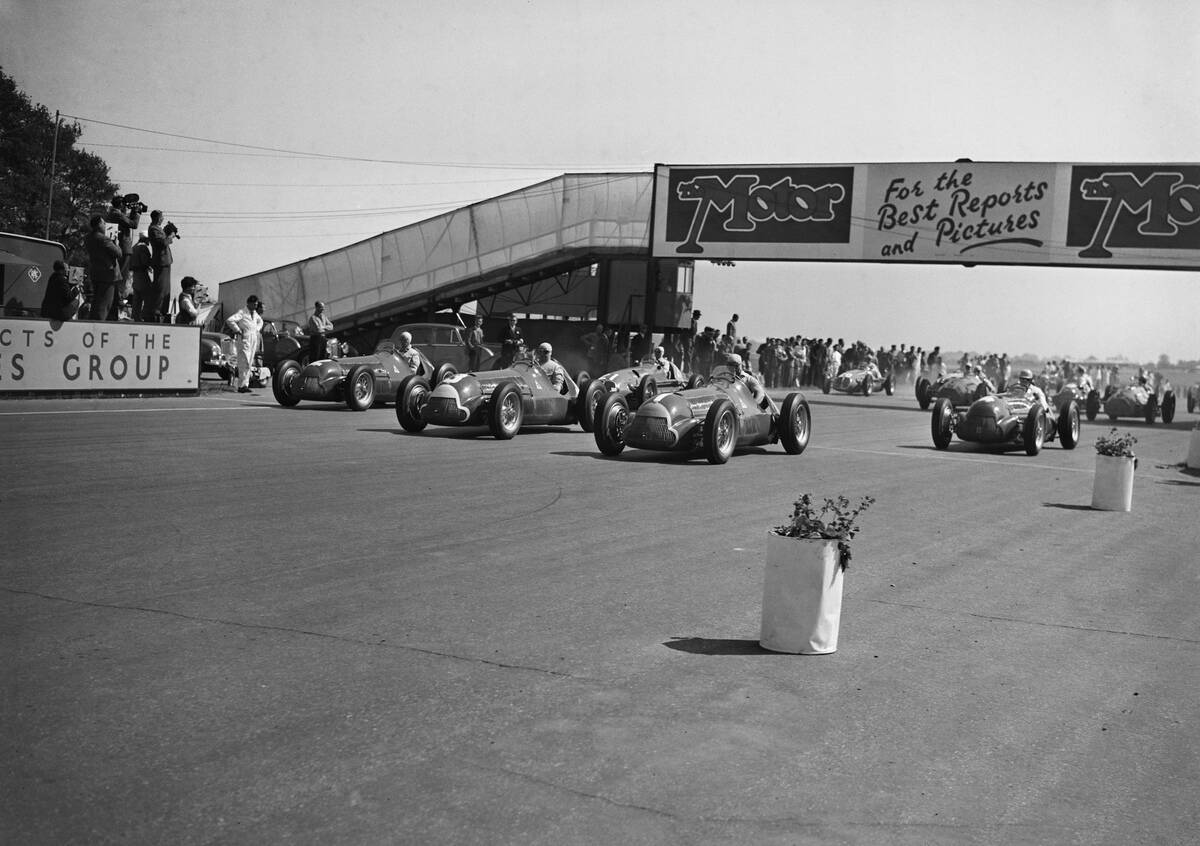
While 1950 marks the beginning of modern F1, this image of the first F1 Championship in 1950 shows that the cars used differed significantly from what was seen in the decades to come.
This 1950 season consisted of seven races — six Grand Prix events in Europe and the Indianapolis 500 stateside — and laid the groundwork for the point system and overall structure of the sport. Juan Manuel Fangio and Giuseppe “Nino” Farina both won three races that first season, with Farina winning the championship based on overall points.
Juan Manuel Fangio was an early star.
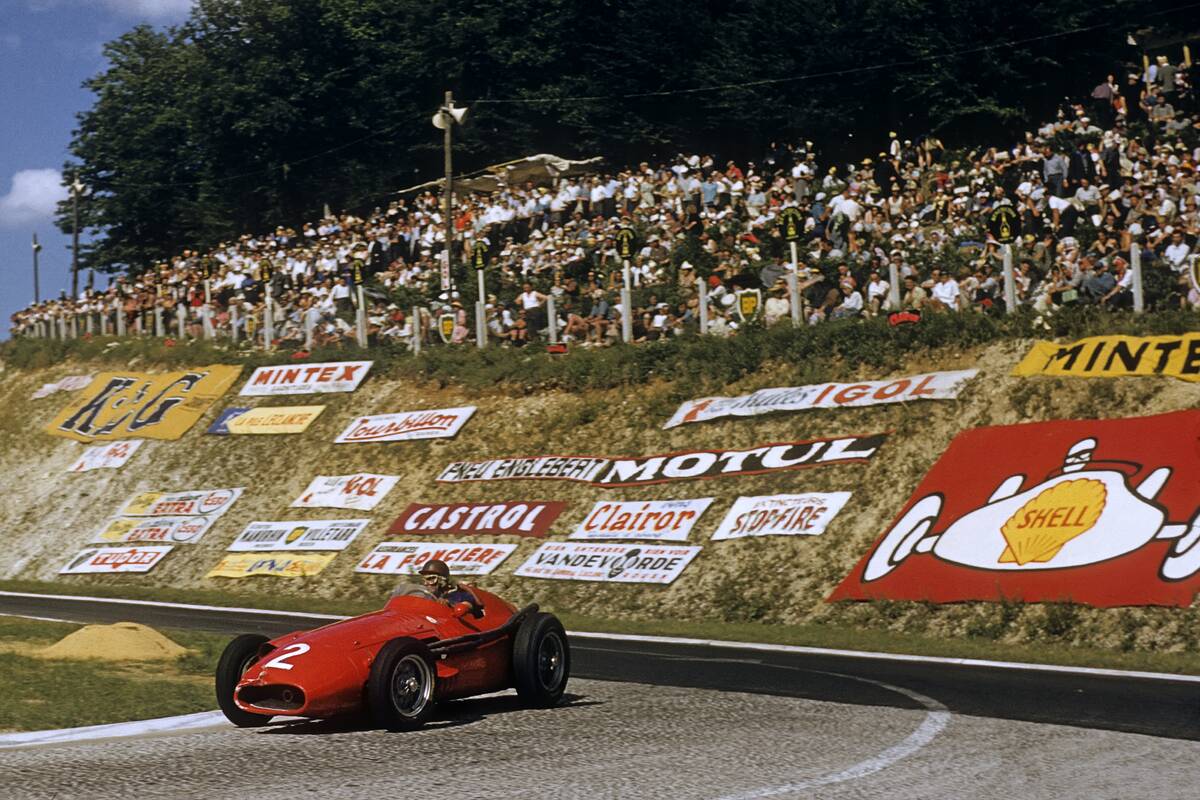
Fangio is still regarded as one of the greatest drivers in F1 history, and for good reason: He won five World Championships in the 1950s, a record that stood for nearly half a century.
This image shows Fangio at the 1957 Grand Prix of France, one of his most notable races. Fangio, driving for Maserati, went head to head with rival drivers Mike Hawthorn and Peter Collins of Ferrari, prevailing to win the race despite stiff competition.
Protective equipment was very different.
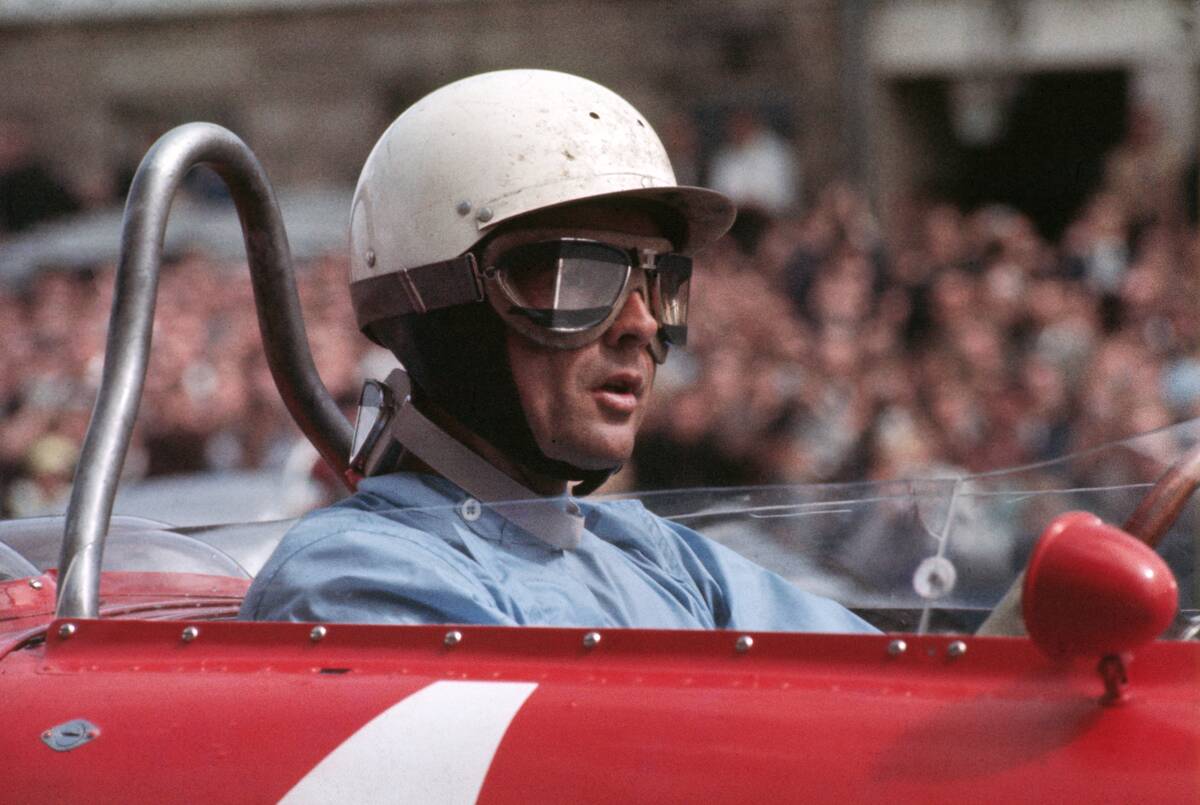
Driver Phil Hill can be seen waiting for the 1961 German Grand Prix to begin. While he’d finish one second behind teammate Wolfgang von Trips in this race, he’d go on to win the 1961 World Championship, becoming the first American driver to win the prize.
Hill’s protective equipment shows the evolution of F1 safety gear. He’s wearing simple cotton or woolen overalls — standard for the era — along with a hard helmet and goggles. This helmet design wouldn’t last for long, but it did represent a significant step forward from the rudimentary leather helmets that had been worn in the past.
John Surtees did something no one had done before — or since.
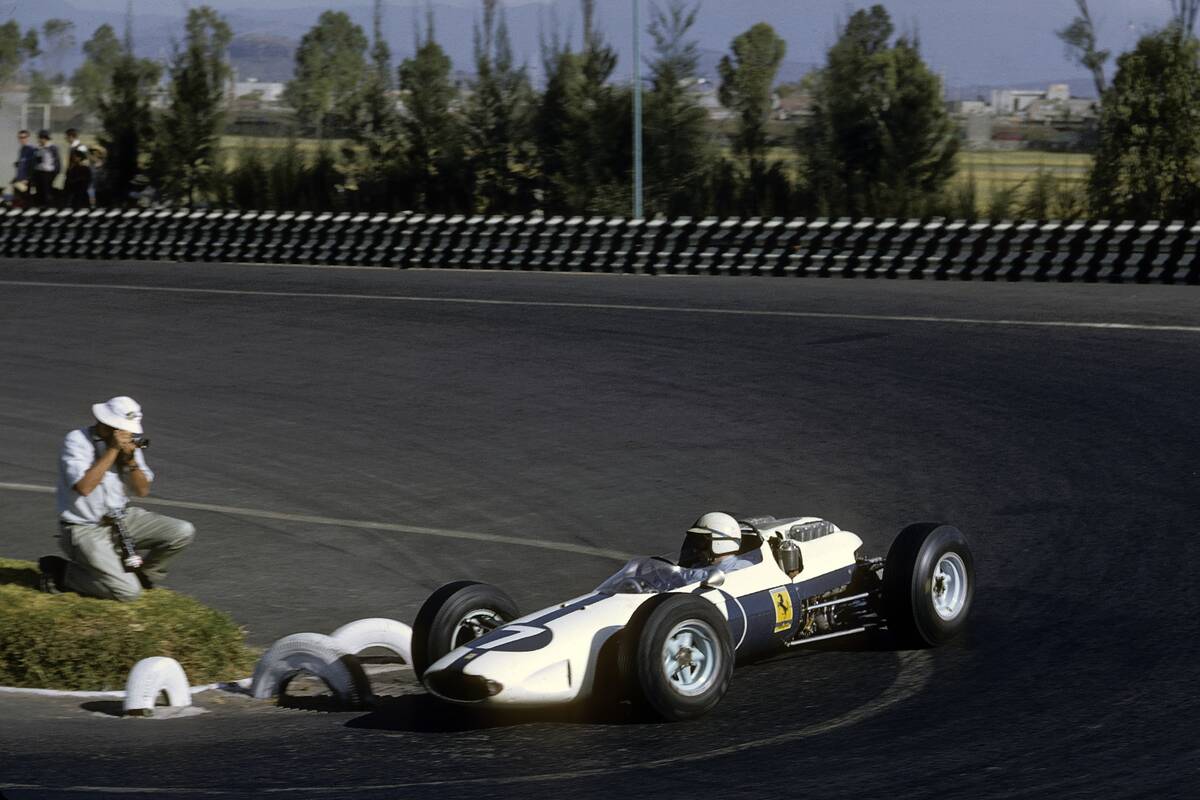
John Surtees can be seen here during the 1964 Grand Prix of Mexico, the finale of the season. Surtees entered the day trailing Graham Hill in overall points, but finished ahead of Hill in the race, clinching the championship.
Surtees went down in history not just for winning the 1964 championship, but also for becoming the only driver in history to win world championships on both two and four wheels. In addition to the 1964 F1 championship, Surtees had also won a motorcycle Grand Prix championship in the 1950s.
Monaco is an iconic track.
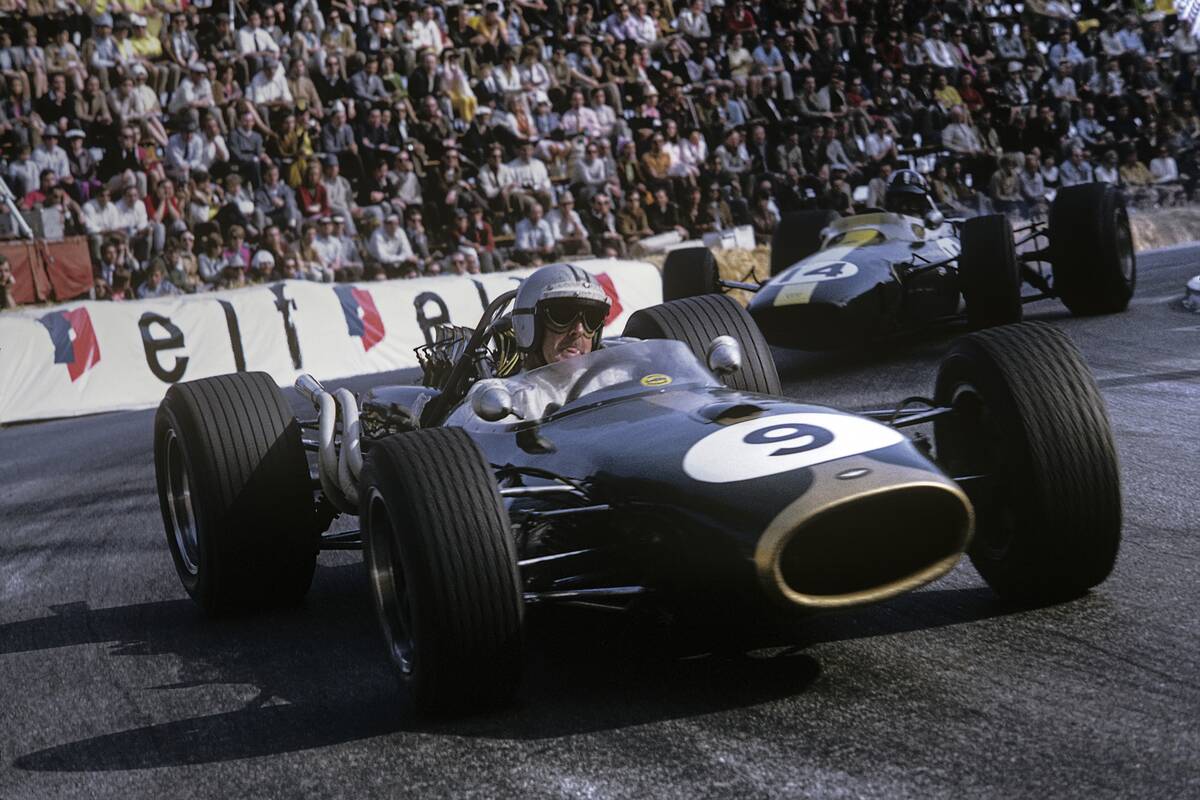
Drivers Denny Hulme and Graham Hill can be seen battling it out on the twisting road course of Monaco for the 1967 Monaco Grand Prix — a race that Hulme would win en route to earning the 1967 world title, making him New Zealand’s first and only F1 World Champion.
The Monaco Grand Prix actually predates the F1 World Championship, as it’s been held annually since 1929 and was incorporated into F1 in 1950. Its narrow streets, set amidst the striking backdrop of Monte Carlo, make for an incredible sight.
Jackie Stewart was a legend.
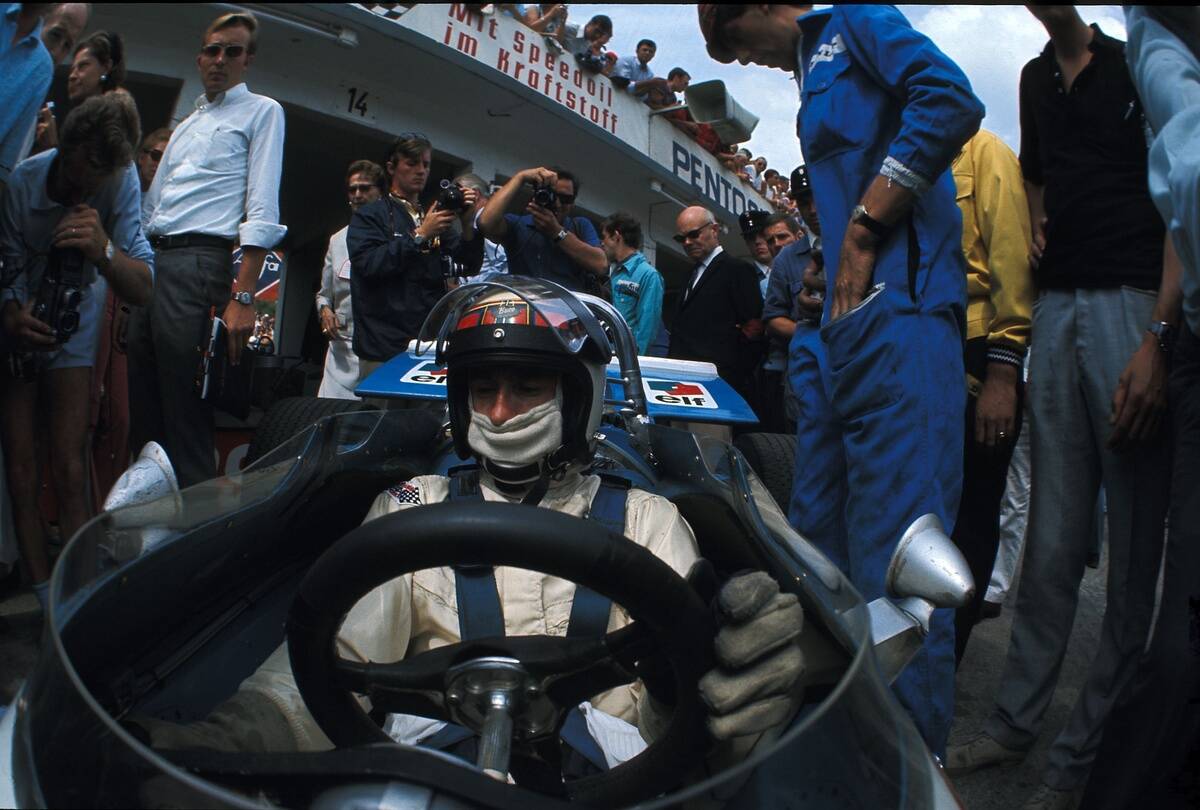
Sir Jackie Stewart is one of Scotland’s most beloved figures, thanks in large part to his dominant F1 career. While he only competed in F1 between 1965 and 1973, he won three World Championships during this time.
Off the course, Stewart was an early advocate for driver safety in an era when fatal accidents were common. Thanks in part to his advocacy, improvements were made in track safety, medical facilities, seatbelts, and crash barriers.
He was a true renaissance man.
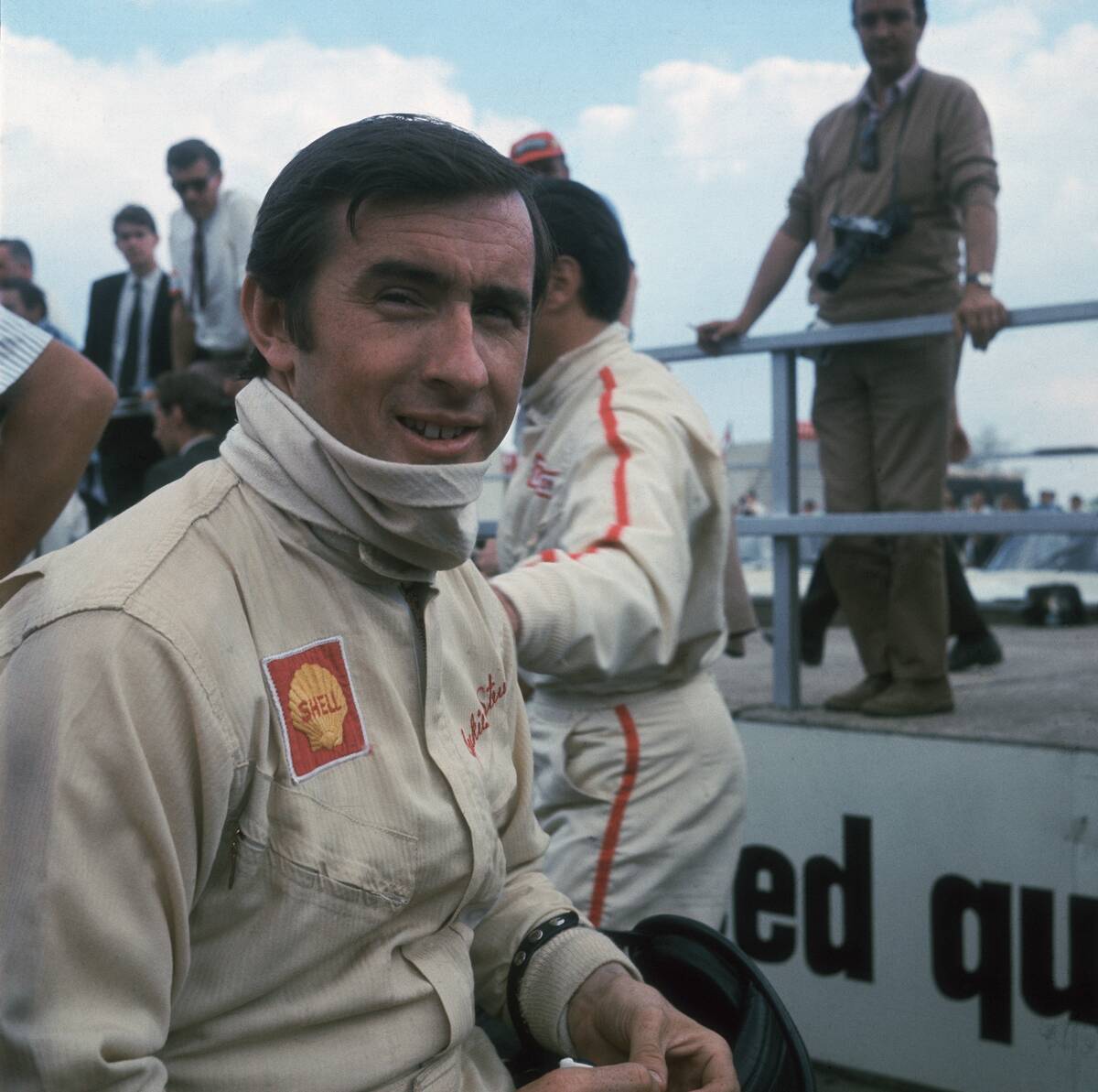
One of the improbable aspects of Stewart’s rise to F1 stardom was the fact that he was a late bloomer and only started racing seriously in his early 20s. After his retirement from the sport, he founded the Stewart Grand Prix team, which later became Jaguar F1 and eventually Red Bull Racing.
It wasn’t just about F1 for Stewart, either, as he spent time in retirement to concentrate on clay pigeon shooting — a sport where he reached Olympic standards.
The sport expanded in the ’70s and ’80s.
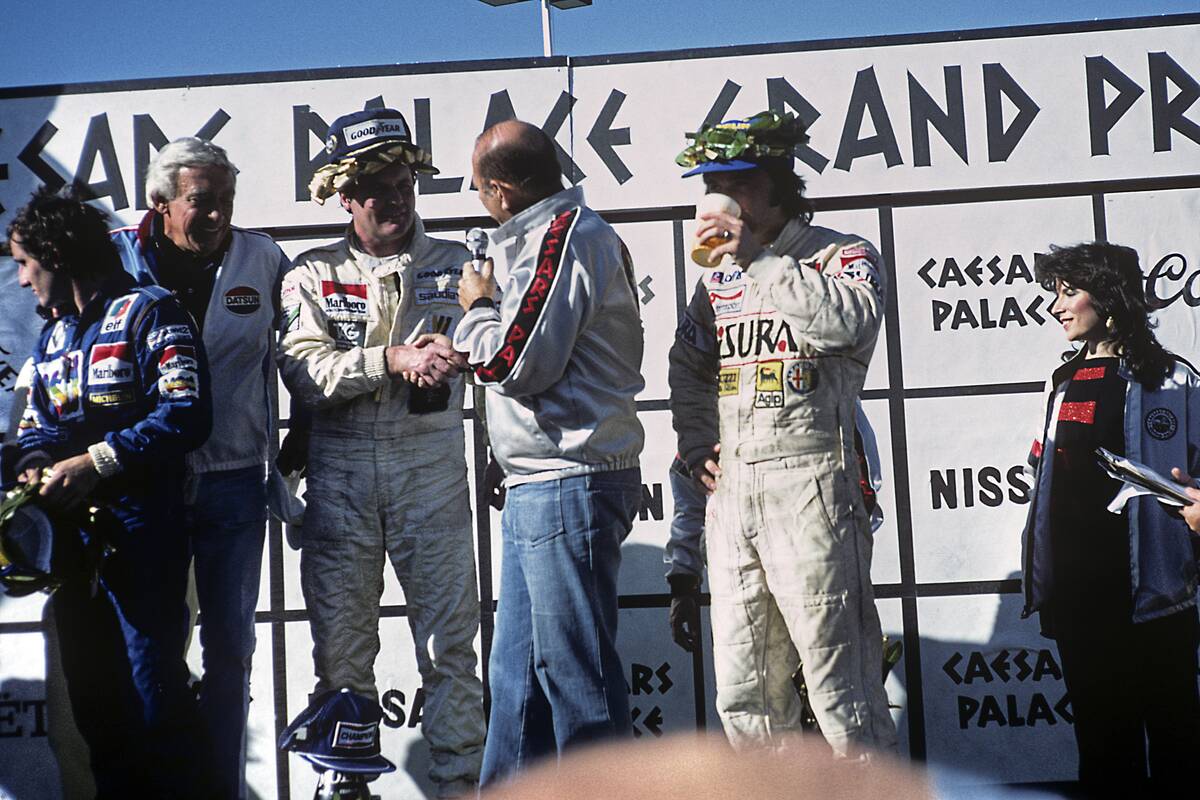
While F1 was never strictly a European phenomenon — it had seen American races and American drivers since the outset — it was, at best, a fringe sport and hardly mainstream in the U.S. during its early days.
This image of the podium at the 1981 Grand Prix of Caesars Palace in Las Vegas shows the sport expanding its global footprint. The race was held on a temporary street circuit in the Caesar’s Palace parking lot, and was held only twice as an F1 event — in 1981 and 1982.
1982 was a tragic year.
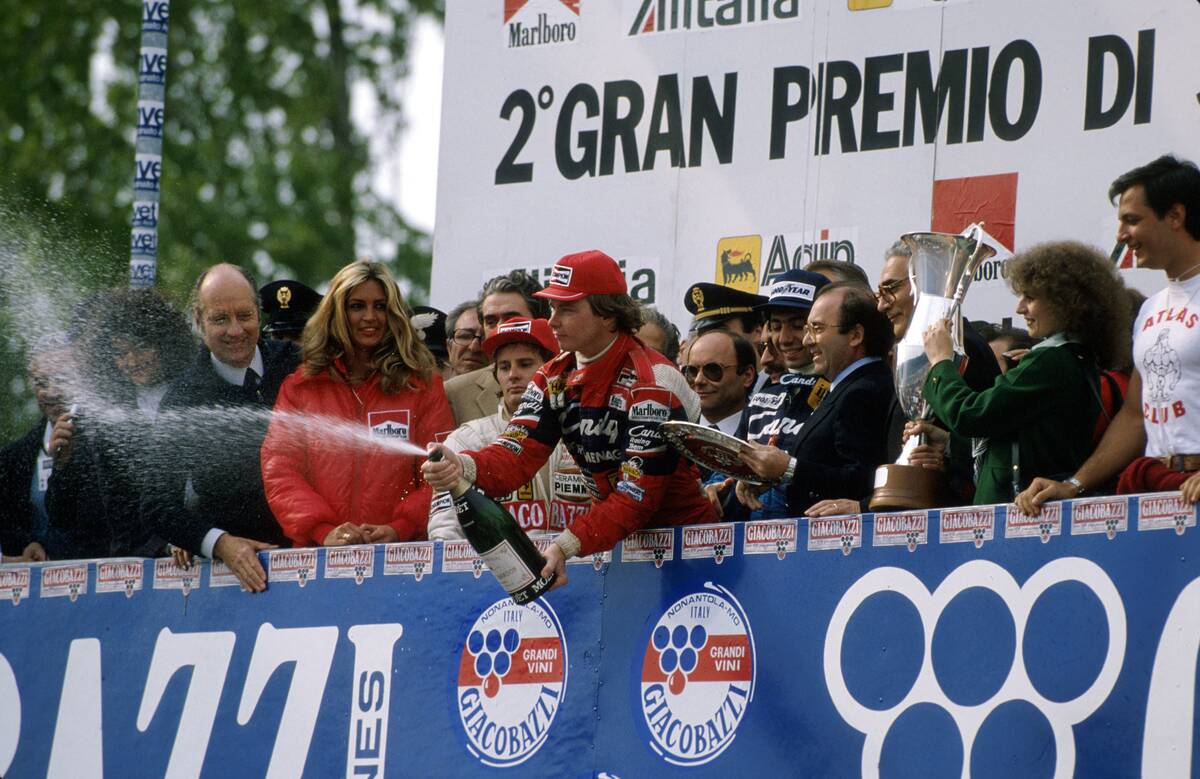
The aftermath of the 1982 San Marino Grand Prix featured the customary champagne shower, but a somber mood was ever-present due to what had happened in prior days.
Driver Gilles Villeneuve had died during the qualifying round held prior to the race itself, a shocking event in the motorsport world. During the race, driver Didier Pironi was in the lead when he crashed at high speed, suffering a career-ending leg injury in the process. This tragic weekend led to calls for safety improvements.
Cars became exponentially more powerful.
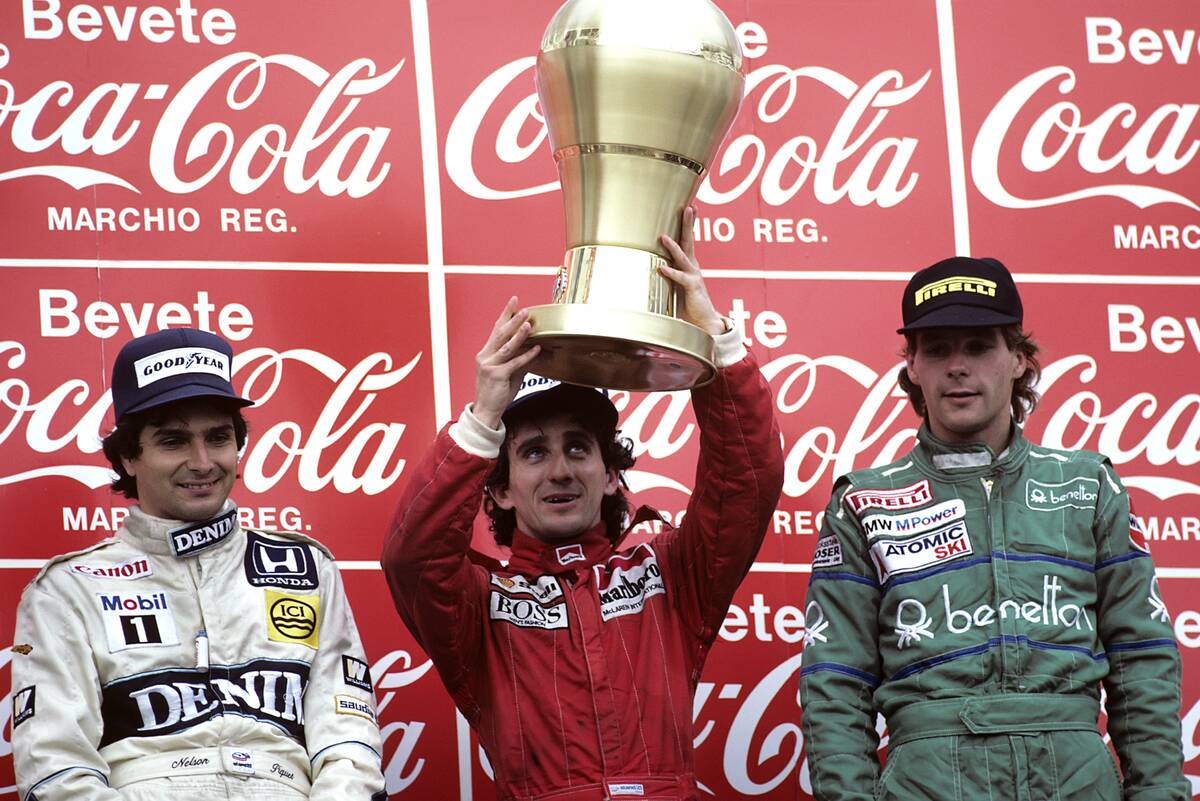
This image of Alain Prost celebrating his dramatic victory at the 1986 San Marino Grand Prix shows the state of the motorsport world four years after the Villeneuve tragedy.
While things were generally safer than they had been in the past, the vehicles used for racing became more and more powerful during this era — and many of them were just as unreliable as they were powerful. It’s an era that saw the rise of iconic drivers such as Prost and Ayrton Senna.
The 1991 Belgian Grand Prix was a crossroads.
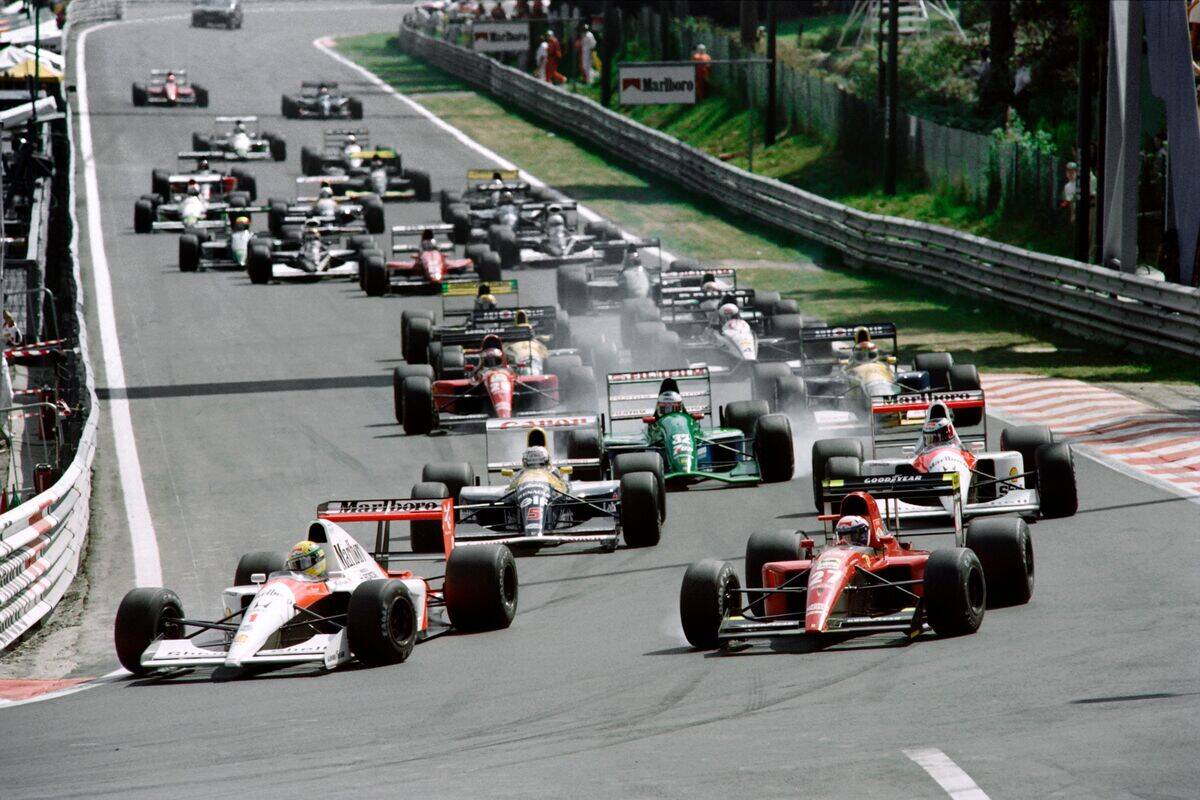
Ayrton Senna was a firmly dominant driver by the time the 1991 F1 season rolled around, and he proved it by winning the 1991 Belgian Grand Prix — his fifth victory of the season en route to his third and final World Championship.
The race was noteworthy for another reason, as rookie driver Michael Schumacher made his debut. While he had to drop out due to a clutch failure, the fact that he qualified seventh in his very first F1 race was a sign of things to come.
Schumacher was one of the best drivers of all time.
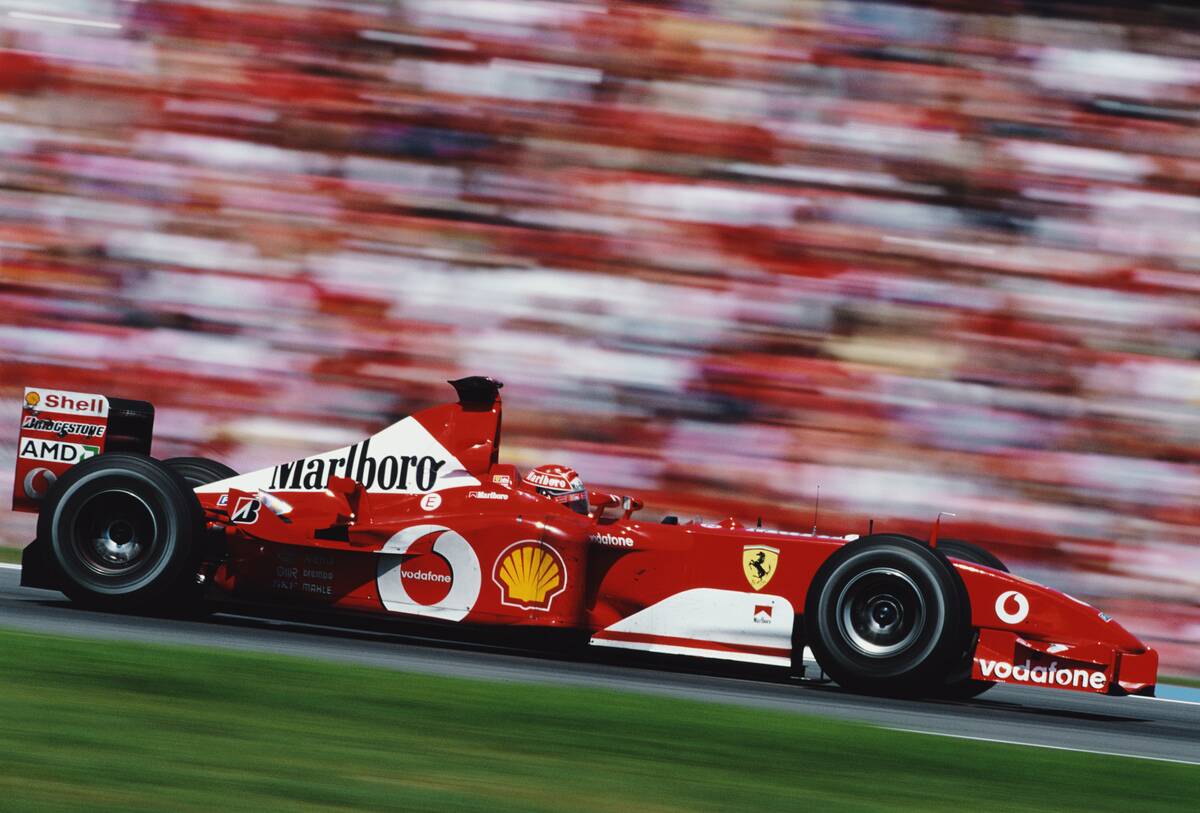
Michael Schumacher very quickly established himself as one of the best drivers in Formula 1, and he won back-to-back World Championships in 1994 and 1995.
Later, in the early 2000s, he would sign with Ferrari to bring the iconic team back to glory after decades of underperformance. Between 2000 and 2004, he won five consecutive titles. Sadly, Schumacher suffered a brain injury in a 2013 skiing accident and was forced to retreat out of the public eye.
The 2000s brought a new crop of drivers.
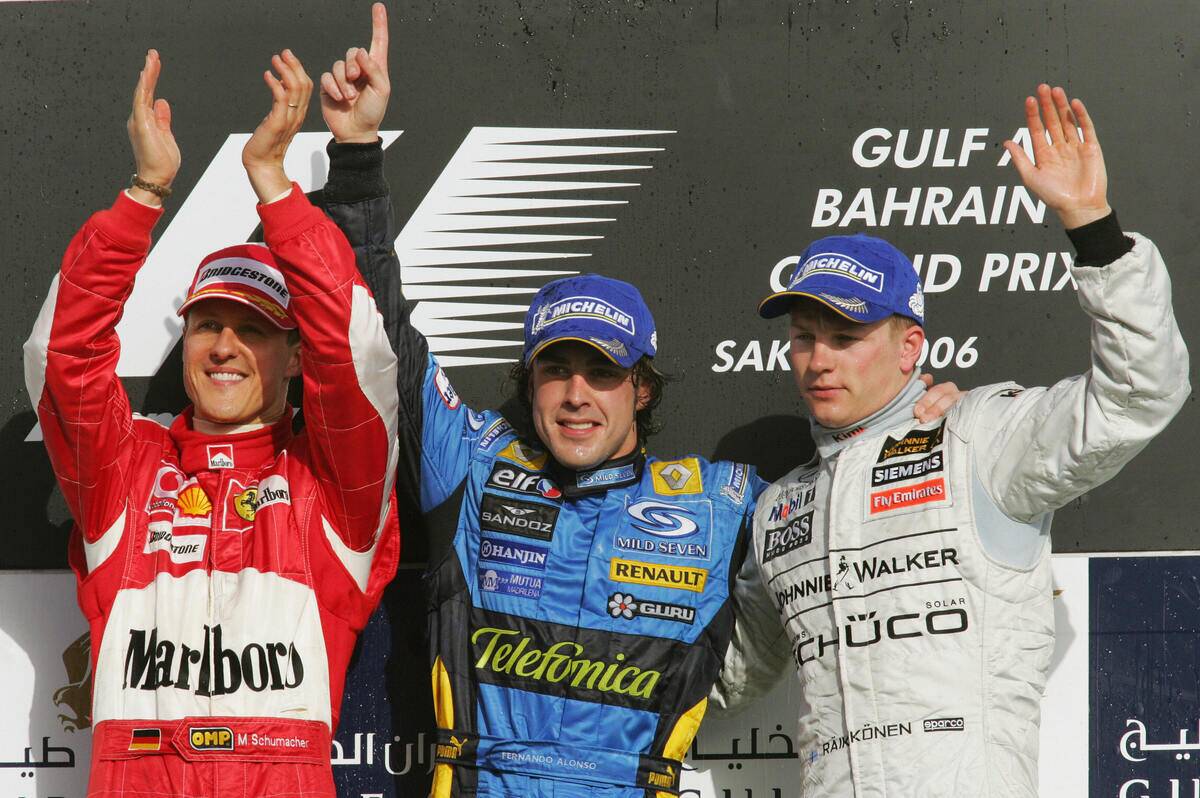
Schumacher’s dominance started to wane after his five world championships, but he continued to compete in F1 during the 2000s and early 2010s against a new crop of drivers.
Schumacher is seen on the left here next to Fernando Alonso and Kimi Raikkonen, two up-and-coming drivers, after the 2006 Bahrain Grand Prix. Alonso prevailed in this race, winning a thrilling wheel-to-wheel, back and forth battle with Schumacher.
Lewis Hamilton is enormously influential.
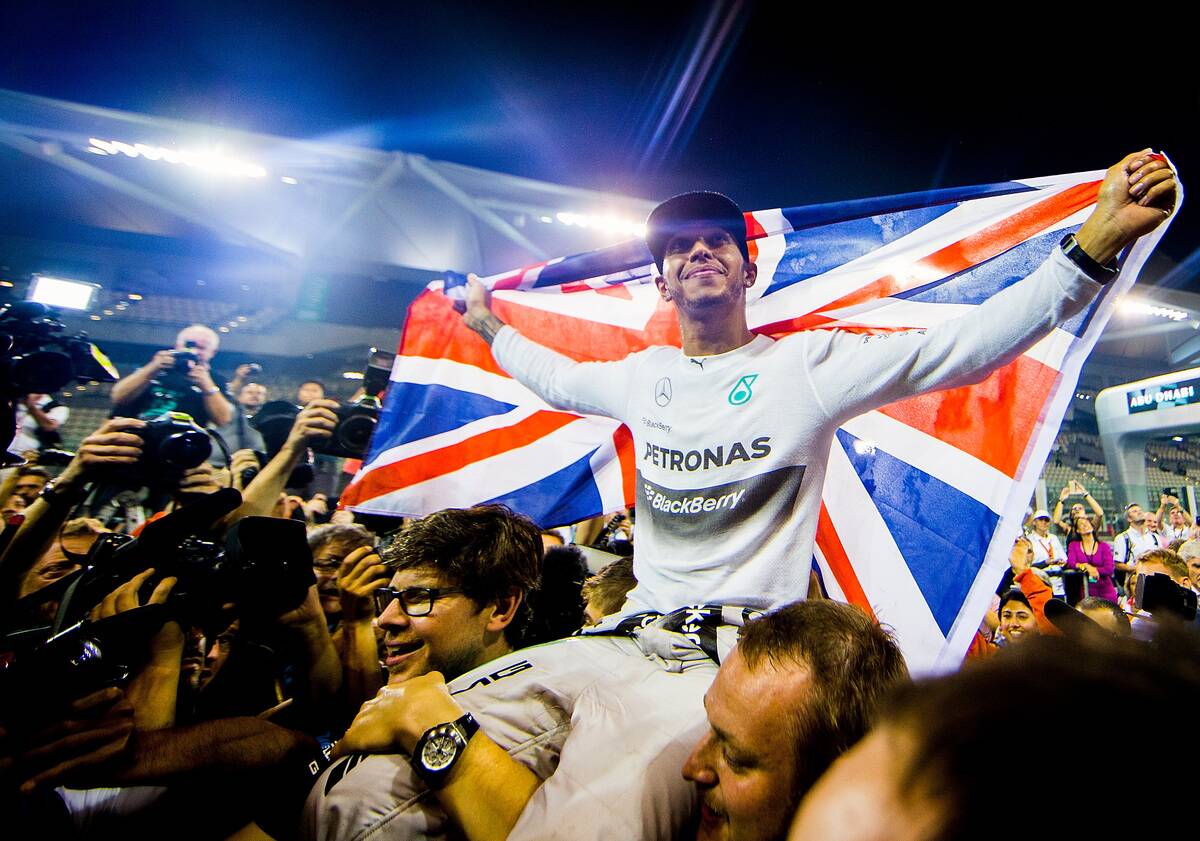
Ever since breaking into F1 with McLaren in 2007, British driver Lewis Hamilton has made waves across the F1 world. He nearly won the championship during this rookie season, and would claim his first World Championship the following year. This made him the youngest champion ever at the time, and the first Black driver to achieve the title.
Hamilton won six more World Championships between 2014 and 2020, equalling Schumacher’s all-time record. He was knighted in 2021 and is one of the most recognizable figures in the sport.
Max Verstappen is one of F1’s best.
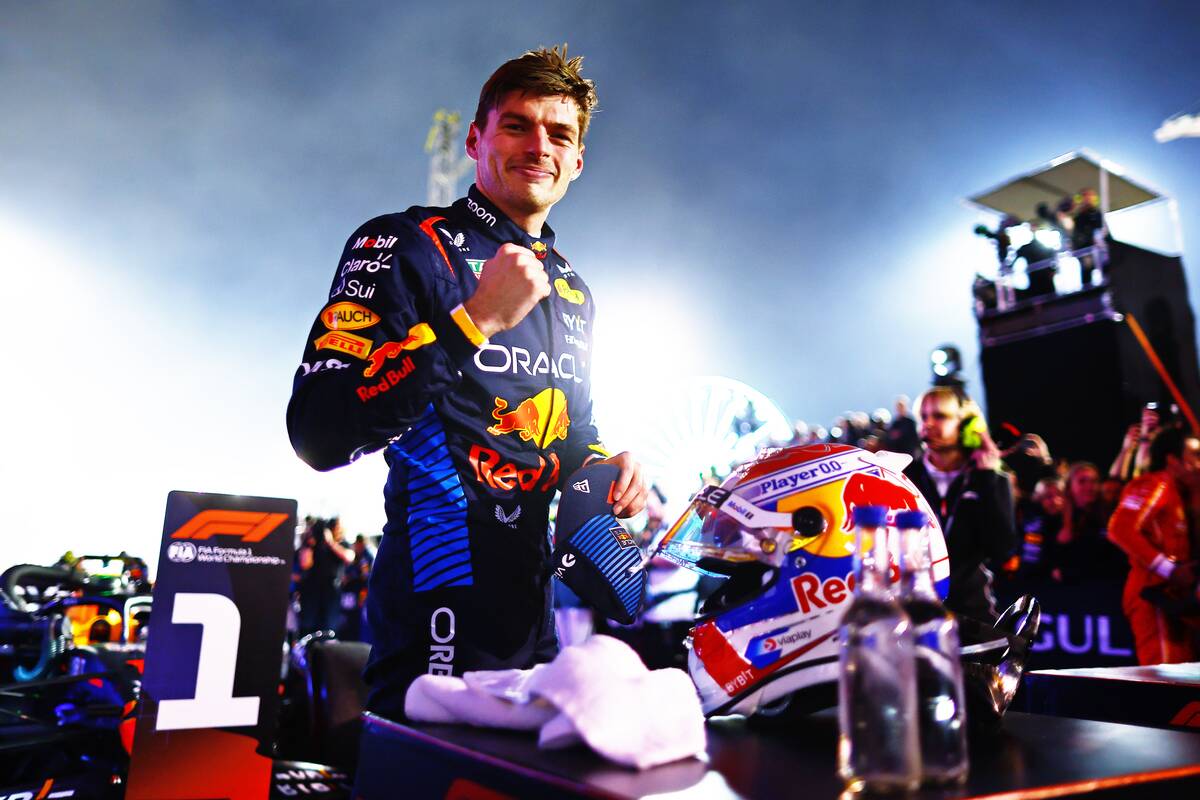
Verstappen can be seen here celebrating his victory in the 2024 Grand Prix of Bahrain, a dominant performance that was never really in doubt. It marked his 12th career “hat trick,” in which he achieved pole position, fastest lap, and race victory in a single Grand Prix.
This performance was a sign of things to come, as Verstappen would carry his momentum through the rest of the season en route to a fourth consecutive World Championship.



